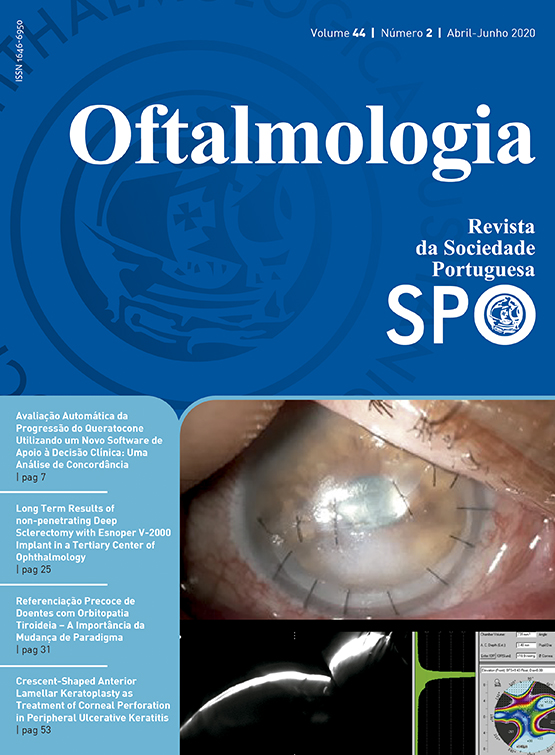Ophthalmic findings in pituitary adenomas: a case-series of 100 patients
DOI:
https://doi.org/10.48560/rspo.18695Abstract
Abstract
Purpose: Pituitary adenomas (PA) correspond to 10-15% of intracranial tumours, and are generally benign slow-growing tumours, associated with a wide range of clinical manifestations. Our aim was to characterize the ophthalmic findings and the utility of the ophthalmological multimodal exam, in the setting of pituitary adenoma.
Methods: retrospective case-series of 100 patients with PA. Clinical records were reviewed for demographics, presenting symptoms, hormonal activity, efficacy and safety of chosen treatment modality. Ophthalmic exam was recorded annually until 5-years of follow-up, including: visual acuity (VA), visual fields (VF), pupillary response (PR), ocular motility, and retinal nerve fibre layer RNFL thickness (RNFLT) in optical coherence tomography (OCT).
Results: Mean age at diagnosis was 52-years [11-85]. Forty-seven patients were female. Mean ophthalmic follow-up was 47±38 months. Hormonal activity was present in 42.7% of cases (mostly prolactin production), and 48.3% were associated with ≥1 hormonal deficiency. Most common presenting symptoms were VF/VA defects (n=30), headache (n=29) and fatigue (n=13). Mean baseline VA was 0.8±0.3. Abnormal PR was found in 25 patients, and 6 had oculomotor defects. VF defects respecting the vertical meridian occurred in 49 patients, of which 20 (40.8%) initially reported visual disturbances. Baseline RNFLT was reduced in 37% (>90% with temporal atrophy). Imagiological tumour progression was accompanied by deterioration of the ophthalmic exam (visual function and/or OCT) in 50% of cases.
Conclusion: Though ophthalmic symptoms are frequent in the setting of PA, oftentimes the patient is unaware of visual disturbances. Collaboration with the ophthalmologist adds value to the management of these patients.
Downloads
Downloads
Published
How to Cite
Issue
Section
License
Do not forget to download the Authorship responsibility statement/Authorization for Publication and Conflict of Interest.
The article can only be submitted with these two documents.
To obtain the Authorship responsibility statement/Authorization for Publication file, click here.
To obtain the Conflict of Interest file (ICMJE template), click here







